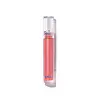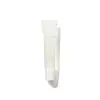What's inside
What's inside
 Key Ingredients
Key Ingredients

 Benefits
Benefits

 Concerns
Concerns

 Ingredients Side-by-side
Ingredients Side-by-side

Water
Skin ConditioningDimethicone
EmollientGlycerin
HumectantCyclopentasiloxane
EmollientDimethicone/Vinyl Dimethicone Crosspolymer
Skin ConditioningCetyl PEG/PPG-10/1 Dimethicone
EmulsifyingMica
Cosmetic ColorantSorbitan Stearate
EmulsifyingSorbitol
HumectantSilica
AbrasivePolyglyceryl-2 Triisostearate
EmulsifyingAcrylamide/Sodium Acryloyldimethyltaurate Copolymer
Emulsion Stabilising1,2-Hexanediol
Skin ConditioningTitanium Dioxide
Cosmetic ColorantC13-14 Isoparaffin
EmollientChromium Hydroxide Green
Cuprous Oxide
Skin ConditioningCI 15850
Cosmetic ColorantPhenoxyethanol
PreservativeLaureth-7
EmulsifyingFerric Chloride
AstringentGlyceryl Acrylate/Acrylic Acid Copolymer
HumectantPropylene Glycol
HumectantButylene Glycol
HumectantLavandula Angustifolia Flower Extract
CleansingRosa Canina Flower Extract
AstringentChamomilla Recutita Flower Extract
MaskingPaeonia Officinalis Flower Extract
TonicRosa Centifolia Flower Extract
AstringentCamellia Japonica Flower Extract
EmollientLilium Tigrinum Extract
Skin ConditioningWater, Dimethicone, Glycerin, Cyclopentasiloxane, Dimethicone/Vinyl Dimethicone Crosspolymer, Cetyl PEG/PPG-10/1 Dimethicone, Mica, Sorbitan Stearate, Sorbitol, Silica, Polyglyceryl-2 Triisostearate, Acrylamide/Sodium Acryloyldimethyltaurate Copolymer, 1,2-Hexanediol, Titanium Dioxide, C13-14 Isoparaffin, Chromium Hydroxide Green, Cuprous Oxide, CI 15850, Phenoxyethanol, Laureth-7, Ferric Chloride, Glyceryl Acrylate/Acrylic Acid Copolymer, Propylene Glycol, Butylene Glycol, Lavandula Angustifolia Flower Extract, Rosa Canina Flower Extract, Chamomilla Recutita Flower Extract, Paeonia Officinalis Flower Extract, Rosa Centifolia Flower Extract, Camellia Japonica Flower Extract, Lilium Tigrinum Extract
Polybutene
Pentaerythrityl Tetraisostearate
EmollientC18-36 Acid Triglyceride
EmollientTridecyl Trimellitate
EmollientBis-Diglyceryl Polyacyladipate-2
EmollientSilica Dimethyl Silylate
EmollientPentylene Glycol
Skin ConditioningCaprylyl Glycol
EmollientPentaerythrityl Tetra-Di-T-Butyl Hydroxyhydrocinnamate
AntioxidantParfum
MaskingBenzyl Alcohol
PerfumingCalcium Aluminum Borosilicate
CI 77891
Cosmetic ColorantSodium Saccharin
MaskingTin Oxide
AbrasiveAnise Alcohol
PerfumingBenzyl Benzoate
AntimicrobialCI 15850
Cosmetic ColorantCI 15985
Cosmetic ColorantAluminum Hydroxide
EmollientCI 77499
Cosmetic ColorantCI 45380
Cosmetic ColorantCI 45410
Cosmetic ColorantCI 75470
Cosmetic ColorantAlumina
AbrasiveEthyl Menthane Carboxamide
TonicLimonene
PerfumingMica
Cosmetic ColorantPolyvinyl Laurate
Silica
AbrasiveLinalool
PerfumingCitral
PerfumingPolybutene, Pentaerythrityl Tetraisostearate, C18-36 Acid Triglyceride, Tridecyl Trimellitate, Bis-Diglyceryl Polyacyladipate-2, Silica Dimethyl Silylate, Pentylene Glycol, Caprylyl Glycol, Pentaerythrityl Tetra-Di-T-Butyl Hydroxyhydrocinnamate, Parfum, Benzyl Alcohol, Calcium Aluminum Borosilicate, CI 77891, Sodium Saccharin, Tin Oxide, Anise Alcohol, Benzyl Benzoate, CI 15850, CI 15985, Aluminum Hydroxide, CI 77499, CI 45380, CI 45410, CI 75470, Alumina, Ethyl Menthane Carboxamide, Limonene, Mica, Polyvinyl Laurate, Silica, Linalool, Citral
 Reviews
Reviews

Ingredients Explained
These ingredients are found in both products.
Ingredients higher up in an ingredient list are typically present in a larger amount.
Ci 15850 is the pigment color red. It is an azo dye and created synthetically.
Azo dyes need to be thoroughly purified before use. This allows them to be more stable and longer-lasting.
This ingredient is common in foundations, lipsticks, and blushes. This color is described as brown/orangey red.
It has many secondary names such as Red 6 and Red 7. According to a manufacturer, Red 6 usually contains aluminum.
Learn more about CI 15850Mica is a naturally occurring mineral used to add shimmer and color in cosmetics. It can also help improve the texture of a product or give it an opaque, white/silver color.
Serecite is the name for very fine but ragged grains of mica.
This ingredient is often coated with metal oxides like titanium dioxide. Trace amounts of heavy metals may be found in mica, but these metals are not harmful in our personal products.
Mica has been used since prehistoric times throughout the world. Ancient Egyptian, Indian, Greek, Roman, Aztec, and Chinese civilizations have used mica.
Learn more about MicaSilica, also known as silicon dioxide, is a naturally occurring mineral. It is used as a fine, spherical, and porous powder in cosmetics.
Though it has exfoliant properties, the function of silica varies depending on the product.
The unique structure of silica enhances the spreadability and adds smoothness, making it a great texture enhancer.
It is also used as an active carrier, emulsifier, and mattifier due to its ability to absorb excess oil.
In some products, tiny microneedles called spicules are made from silica or hydrolyzed sponge. When you rub them in, they lightly polish away dead skin layers and enhance the penetration of active ingredients.
Learn more about Silica